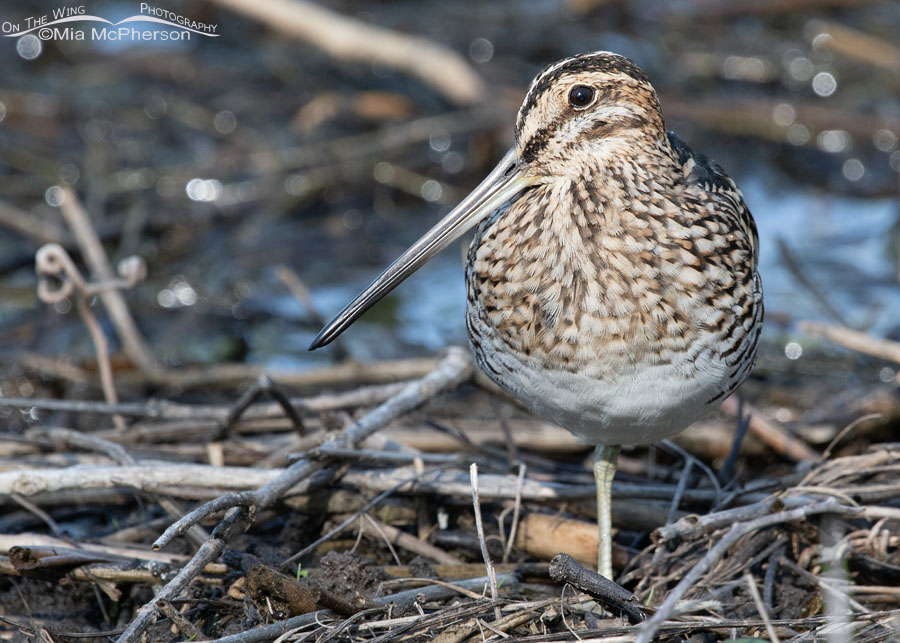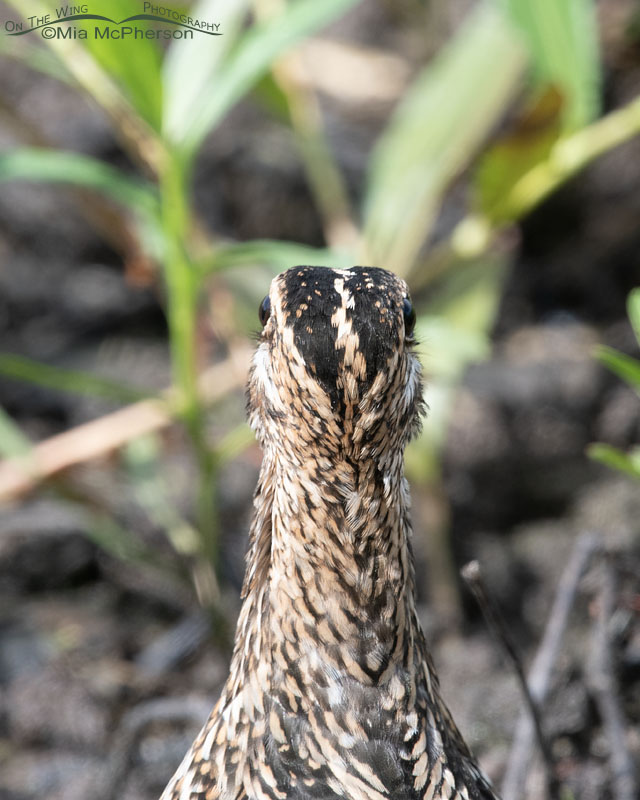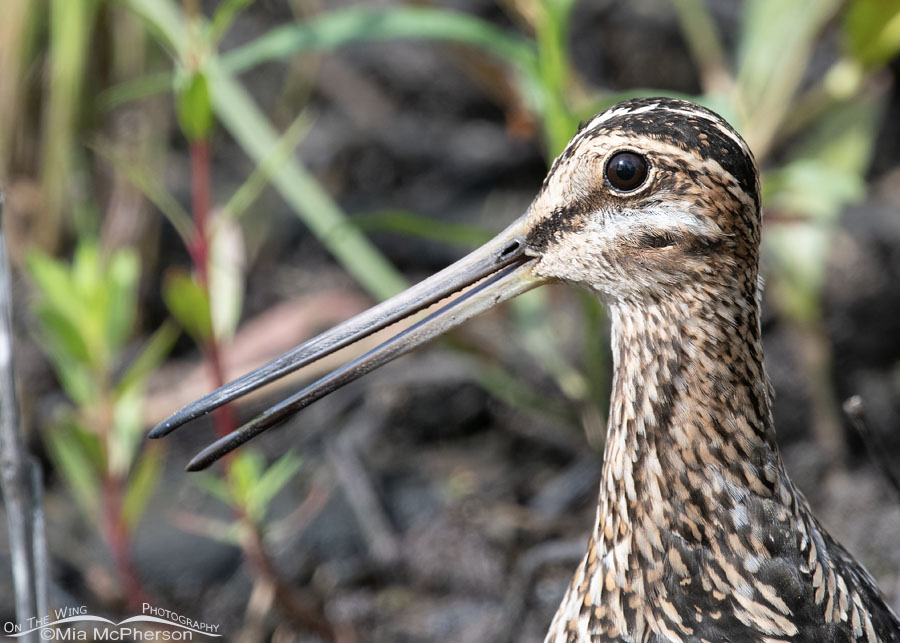Recently, I’ve had a couple of opportunities to photograph a Wilson’s Snipe in the Lower Scarborough Slough at Sequoyah National Wildlife Refuge in Oklahoma.
 Spring Wilson’s Snipe standing on one leg in a slough – Nikon D500, f11, 1/1250, ISO 640, Nikkor 500mm VR with 1.4x TC, natural light
Spring Wilson’s Snipe standing on one leg in a slough – Nikon D500, f11, 1/1250, ISO 640, Nikkor 500mm VR with 1.4x TC, natural light
The first time I photographed the snipe, it was resting on one leg at the edge of the slough, not far from the dirt road. The light was wonderful, and I had a great view of this shorebird.
*For the purpose of full disclosure, I toned down a bright, spring green piece of grass at the lower right-hand side of this image during post-processing because I felt it was very distracting.
 Back of a Wilson’s Snipe’s head showing its eyes – Nikon D500, f10, 1/320, ISO 500, Nikkor 500mm VR with 1.4x TC, natural light
Back of a Wilson’s Snipe’s head showing its eyes – Nikon D500, f10, 1/320, ISO 500, Nikkor 500mm VR with 1.4x TC, natural light
Two days ago, I had the opportunity to photograph the snipe in the same area, but it was even closer to me in the “mobile blind” than it was on the 14th. The mobile blind is my friend Steve Creek’s pickup.
I saw the back of the head of the Wilson’s Snipe and thought that this photo would be perfect to illustrate the nearly 360-degree field of vision that this shorebird species has.
The eyes of Wilson’s Snipe are set back so far on their heads that they almost have eyes at the back of their heads. It is extremely difficult to sneak up behind snipe for that reason, whether it is a predator or a human.
That is interesting fact #1.
 Spring Wilson’s Snipe portrait at Sequoyah NWR – Nikon D500, f10, 1/320, ISO 500, Nikkor 500mm VR with 1.4x TC, natural light
Spring Wilson’s Snipe portrait at Sequoyah NWR – Nikon D500, f10, 1/320, ISO 500, Nikkor 500mm VR with 1.4x TC, natural light
The second interesting fact about this snipe species, and one I wasn’t aware of until two days ago, is that when this species gets warm or overheated they use gular fluttering to cool down. That is something I’d never seen before in this species. This snipe was gular fluttering when I took this image.
The primary purpose of gular fluttering in birds is to help dissipate excess heat and regulate body temperature.
I’m always learning something new about my subjects. Photographing this snipe expanded my knowledge about this species.
Life is good.
Mia
Click here to see more of my Wilson’s Snipes photos plus facts and information about this species.


This snipe appears to have nostrils?
Great photos again! I hope we get them again this year in Utah. It was so fun to watch so many for a couple of weeks before they moved on. I have a question about the serrations on the back of the beak. Do they assist with food? I have watched them use that area of beak while preening feathers and they seem to run feathers through the serrations like comb teeth.
Love the portraits. Spectacular!
Great shots and great info – thanks.